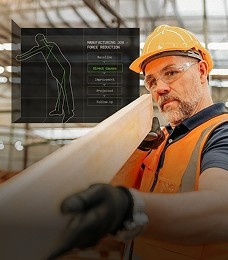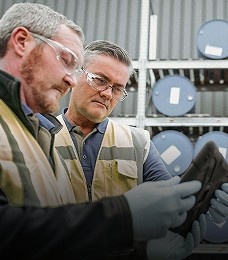Since working from home has become the modern way of business, we’re doing more office consults with customers who’d previously disregarded home-office ergonomics, with the hope that we’d return to our offices sooner rather than later.
At this point in the game, even with the rapid development of vaccines, it’s likely that we’ll return to the office later rather than sooner. The remote workforce has realized this, and many have finally begun the search for the perfect at-home setup.
The consequence of ignoring ergonomics is the development of musculoskeletal disorders (MSDs). We see cases from common MSDs like carpal tunnel syndrome and nerve entrapment syndromes, to less common occurrences of bipedal edema in the lower limbs. Whatever the MSD, both the employee and the employer are affected.
Altogether, a case of carpal tunnel alone can set an employer back by up to $60k. Employees who have developed symptoms like pain, tingling and numbness over the past year are likely now walking the thin line between self-recovery and medical intervention. Just as important, if not more so, are the consequences to those suffering from the disorder, spanning from the inconvenience of that medical intervention to the inability to open a jar.
So what changes are important now to improve the ability to rebound from MSDs in-progress, as well as prevent the onset of MSDs in the future? Employees need to discuss their needs for working remotely with their employers; the employers need to consider the possible future costs of MSDs for their employees. When the two can cooperate to gain the return on investment, the benefits are substantial for both parties.
Home Office Considerations for Employees:
At this point, employees need to take an honest look at their remote workspaces and make changes where necessary. People who may have put off ergonomics assessments that were previously offered, or have avoided requesting furniture upgrades from their employers, may want to think again. In some cases, the long-term effects of sitting in a chair with no adjustability or support stem beyond a simple chiropractic adjustment or physical therapy session to fix.
For example, some workers have required surgery for slipped discs after hunching over on a stool for several months when working. Assuming that an underlying condition already existed, these injuries are the end result of the mechanism by which MSDs work, and a fully supportive chair could have improved the outcome of this situation.
If your employer isn’t offering options for virtual or professional consultations at this time, check out these resources to self-evaluate, and use the ideas here to improve your current situation. If your employer is offering such options, take advantage of them; don’t hold off on acquiring recommended equipment.
Some employees don’t want to cost their employers resources that they view as unnecessary. The reality is that employers who partake in ergonomics programs are well aware that providing employees with a proper chair, monitor, and keyboard costs much less than paying a worker’s compensation bill. More importantly, employers are aware that the improved quality of life from having a better workspace compounds into employees’ work with improved output and productivity.
Home Office Considerations for Employers:
It’s time to consider the impact that supporting remote employees can have. From a return-on-investment standpoint, we’re at the tipping point. Sooner or later, workers comp. cases are going to skyrocket, and organizations could be picking up an unprecedented tab.
Now’s the time to act, but what’s the easiest approach?
Several solutions for work-from-home office ergonomics exist. VelocityEHS Office Ergonomics, voted best ergonomics software available by Verdantix, recently released work-from-home tools that enable employees to self-evaluate their work-from-home setups. This approach enables organizations to build an organic risk map that highlights where the major problems are, and provides insight to fixing them, with a before-and-after comparison for added benefit.
This solution also lets employees to make low-cost, high-impact improvements on their own, with options for one-on-one professional consultations when there’s a gap between the needs of the employee and the return from the software. Beyond that, managed services are available to help identify key trends and utilize the metrics that count to encourage the long-term health of employees in the organization.
Both employees and employers are at a crossroads.
The decision to make changes now or continue along the path of least resistance may influence both medical invoices and employee retention in the long run. With a little flexibility and open-mindedness from employees and employers alike, organizations stand a chance to improve the future of quality of life and work while work-from-home continues to prevail both during and following the age of the pandemic.
For further reading:














